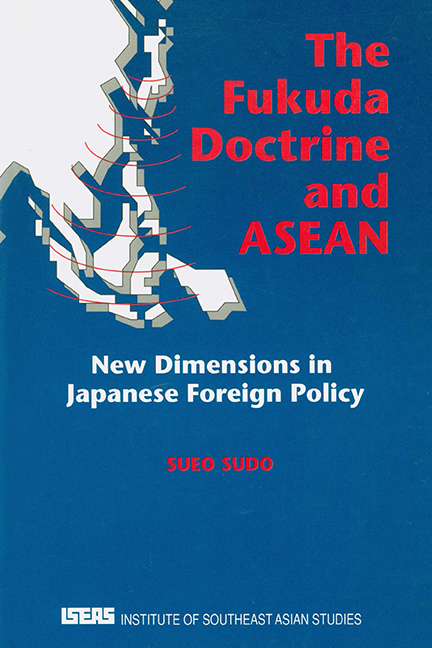Book contents
- Frontmatter
- Dedication
- Contents
- List of Tables
- Preface
- Abbreviations
- Introduction
- chapter one A Framework for Analysing Japanese Policy Towards Southeast Asia
- chapter two Post-war Japan's Re-entry into Southeast Asia
- chapter three Japan's Policy Towards Regional Development
- chapter four External Challenge and Changing Japan-Southeast Asia Relations; 1975–77
- chapter five A Changing Southeast Asia in Japanese Politics
- chapter six Formulating the First Doctrine in Japanese Foreign Policy
- chapter seven Japan's ASEAN Policy, 1977–87
- chapter eight Conclusion
- Appendices
- Bibliography
- Index
- THE AUTHOR
chapter four - External Challenge and Changing Japan-Southeast Asia Relations; 1975–77
Published online by Cambridge University Press: 21 October 2015
- Frontmatter
- Dedication
- Contents
- List of Tables
- Preface
- Abbreviations
- Introduction
- chapter one A Framework for Analysing Japanese Policy Towards Southeast Asia
- chapter two Post-war Japan's Re-entry into Southeast Asia
- chapter three Japan's Policy Towards Regional Development
- chapter four External Challenge and Changing Japan-Southeast Asia Relations; 1975–77
- chapter five A Changing Southeast Asia in Japanese Politics
- chapter six Formulating the First Doctrine in Japanese Foreign Policy
- chapter seven Japan's ASEAN Policy, 1977–87
- chapter eight Conclusion
- Appendices
- Bibliography
- Index
- THE AUTHOR
Summary
The declaration of the Fukuda Doctrine on 18 August 1977 was timely and significant given the changing situation in Southeast Asia as that region entered a new phase of regional politics. The United States came to play a less and less visible role in the region while the five countries of the Association of Southeast Asian Nations – Indonesia, Malaysia, the Philippines, Singapore and Thailand – embarked on their search for a new framework for conducting regional policies. After the Bali Summit of 1976, ASEAN's search for a new partner and Japan's quest for a new regional policy resulted in a top-level meeting between ASEAN heads of government and Prime Minister Takeo Fukuda in August 1977. At the Summit, Japan played a central role in effecting the advent of a new era in Southeast Asian regionalism. Although there existed some differences between ASEAN's expectations for Japan and Tokyo's intentions, their co-optation constituted a major turning point in the history of Japan-Southeast Asia relations. By announcing the Doctrine in 1977, the Japanese Government expressed its readiness to play a positive role in promoting politico-economic and cultural relations between Japan and Southeast Asia. It is against this general background that external factors will be examined in this chapter.
Based upon the framework constructed in Chapter I, we will delve into the process of decision-making in the case of the Fukuda Doctrine. In articulating the causes of policy shift, we will examine four perspectives, external as well as internal. In particular, their causal relationships will be explicated so as to assess which perspective best accounts for the adoption of the Doctrine. The case study will be divided into three parts. This chapter will deal with the external factors, that is, the international system and the regional subsystem while the internal factors, that is, domestic politics and ideas, will be examined in the following two chapters.
- Type
- Chapter
- Information
- The Fukuda Doctrine and ASEANNew Dimensions in Japanese Foreign Policy, pp. 77 - 113Publisher: ISEAS–Yusof Ishak InstitutePrint publication year: 1992

